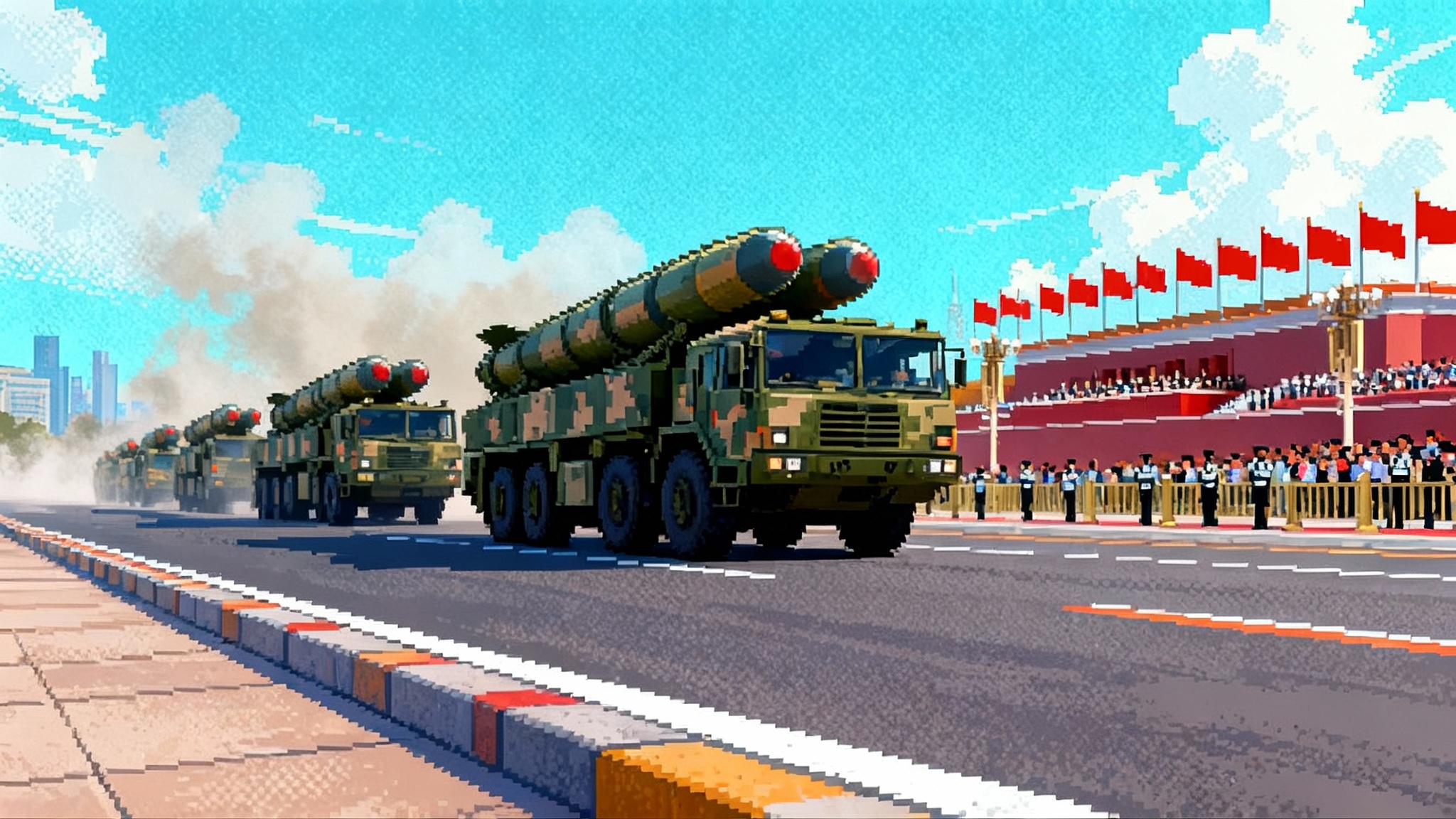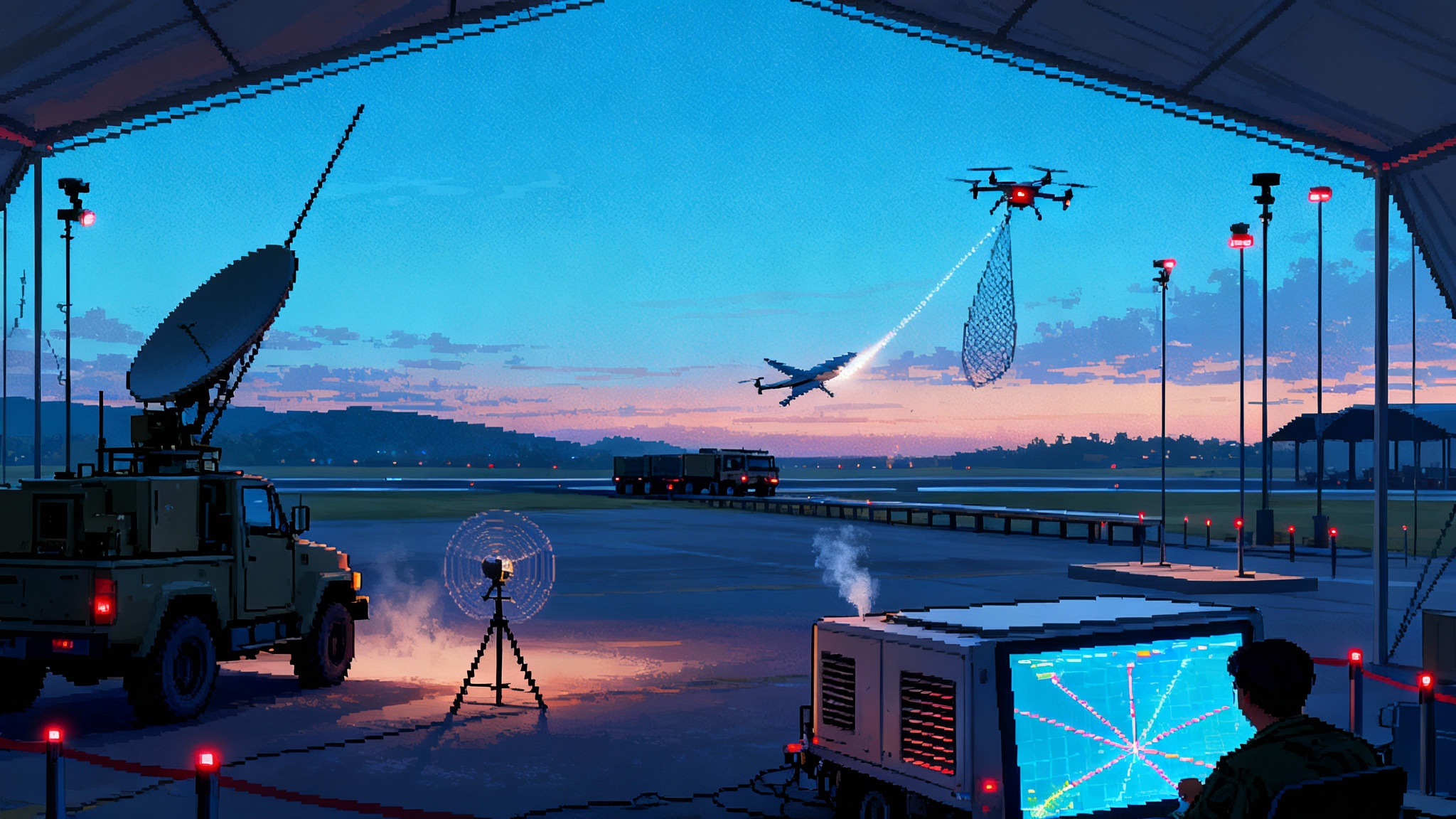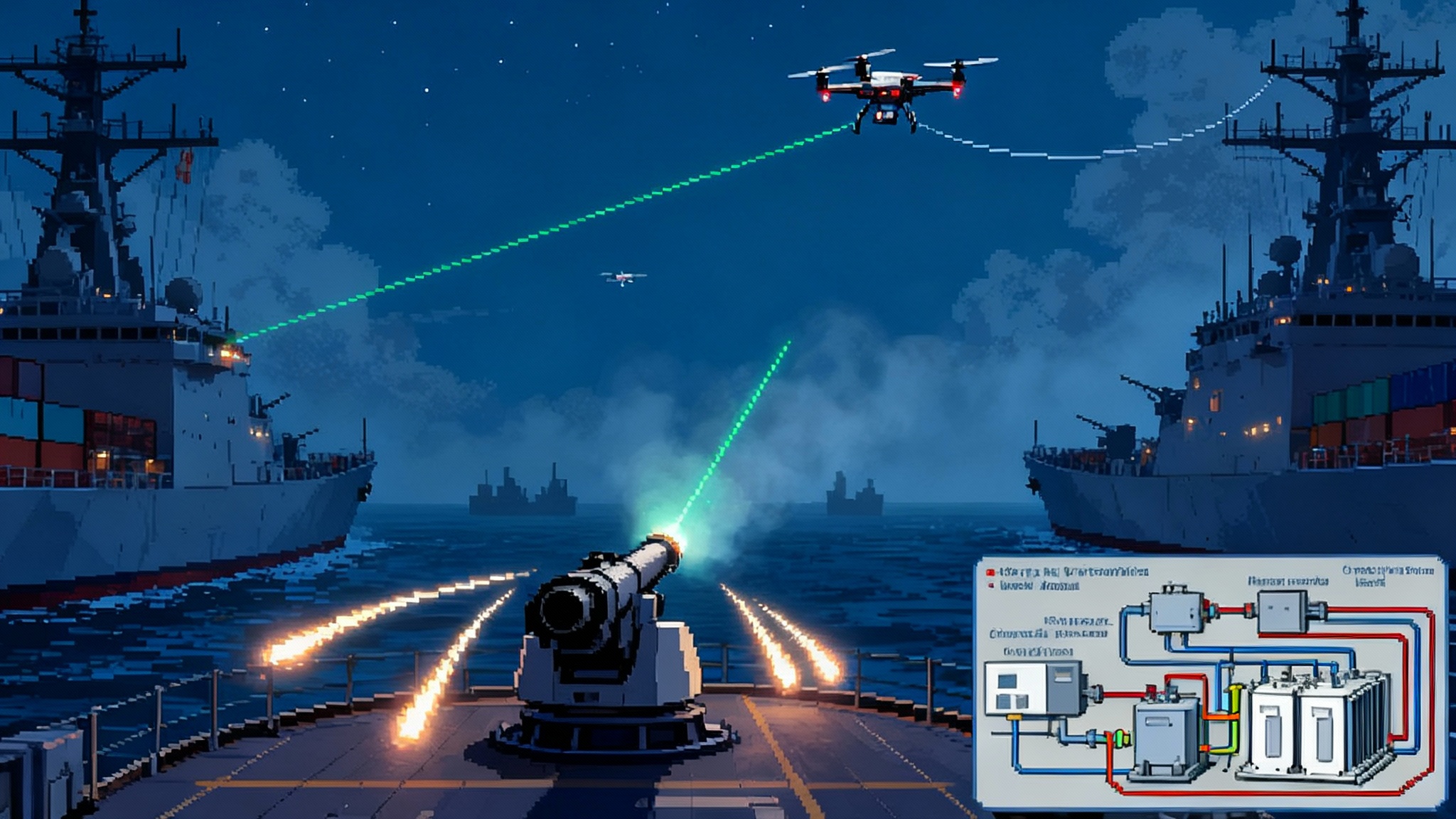China’s new sea skimmers are testing the limits of Aegis
Beijing’s September parade put scramjet sea skimmers front and center. Here is why low‑altitude hypersonic flight compresses reaction time for U.S. ships, what counters are realistic in 3–5 years, and why uncrewed pickets matter most.

What Beijing just put on the street
China’s early‑September military parade in Beijing was calibrated to send a message to navies, not just armies. Among the headline systems were new entries in the YJ anti‑ship series and other strike weapons that Chinese media and foreign outlets framed as hypersonic or near‑hypersonic sea skimmers, the class of missiles designed to fly fast and very low to shorten a defender’s reaction time. The display included variants labeled YJ‑15, YJ‑19, YJ‑20 and updates to the YJ‑21 family, alongside other air‑ and ground‑launched strike weapons. Reporting from the scene emphasized a maturing portfolio that mixes aeroballistic, glide, and scramjet cruise profiles under a single anti‑ship umbrella, a clear signal to any surface fleet that relies on layered air defense. Reuters summarized the lineup and context on Sept. 3.
The precise performance of the new YJ variants remains classified and likely uneven across prototypes. What matters for U.S. naval defense is the trend line: faster anti‑ship missiles flying lower with more terminal maneuver and better seekers, delivered from more launch platforms at greater standoff. That is enough to shift the defender’s math.
Why low‑altitude hypersonic flight stresses Aegis
Sea skimming exploits physics and geometry more than marketing terms. The Earth’s curvature makes radar line‑of‑sight the ultimate gate on detection. A missile hugging the surface can be hidden by the horizon until it is close, even to a very capable radar. Add high speed and the timeline collapses.
- Detection window: A shipboard radar mounted a few dozen meters above the water will not see a target skimming a few meters above the surface until it is relatively near. At that point the timeline to intercept can be measured in tens of seconds, not minutes, especially if the inbound is moving several times the speed of sound.
- Clutter and multipath: The sea surface throws up reflections and Doppler clutter that complicate discrimination and track formation for any radar, even modern active arrays. Sea state, wind, precipitation, and evaporation ducts all modulate this problem.
- Terminal maneuver: Even modest cross‑range weaving at very high speed can break a firing solution. The defender’s fire control loop has to maintain a quality track while managing the ship’s own emissions and deconflicting outgoing interceptors, decoys, and jammers.
Scramjet‑powered cruise missiles that can sustain supersonic or hypersonic speeds near sea level magnify each of those issues. Real‑world engineering forces tradeoffs between speed, range, thermal management, and seeker performance in dense air. Still, the combination of lower altitude, higher speed, and smarter seekers is enough to stress today’s tactics, techniques, and procedures.
The Aegis baseline today, and what changes first
Aegis warships remain formidable. The baseline that matters for sea skimmers has three pillars: radar sensitivity and clutter rejection, combat‑system track quality and weapon assignment speed, and the mix of effectors from soft‑kill to hard‑kill.
- Sensors: The AN/SPY‑6 family is replacing legacy SPY‑1 across the Flight III destroyers and selected Flight IIA upgrades. SPY‑6 brings digital beamforming, more raw sensitivity, and better electronic protection. It helps at the margins in sea clutter and in holding tenuous low‑altitude tracks, and it is built to ingest more offboard data. Physics still imposes the horizon, so distributed sensing and elevated assets remain essential.
- Weapons: SM‑2 and ESSM Block 2 cover much of the supersonic sea‑skimmer problem set. SM‑6 is the long‑reach, multi‑mission round that can prosecute high‑end cruise missiles and some aeroballistic profiles, and it brings the kinematics to engage stressing targets when cued in time.
- Soft‑kill and EW: The U.S. Navy has been upgrading its non‑kinetic layer. Nulka active decoys, Mk 59 inflatable RF decoys, and improved chaff and flares remain relevant if they are launched early and scripted well. The SEWIP Block 3 upgrade adds electronic attack options to the SLQ‑32 suite, increasing the odds of seducing or confusing seekers in the final seconds.
That is the baseline. The question the parade poses is not whether Aegis can intercept fast sea‑skimming threats, but how reliably it can do so under saturation and from how far out. The answer hinges on how quickly the Navy can field the next increments and how it changes the geometry with offboard sensors.
Near‑term counters that matter, 3 to 5 years
Think of the next five years as a practical sprint to buy time. Three categories will matter most at sea: better eyes, faster hands, and cheaper shots.
1) Better eyes: SPY‑6 and more sensors looking outward
- SPY‑6 rollout: Flight III destroyers arrive with SPY‑6(V)1, and the Navy is backfitting a scaled SPY‑6(V)4 to selected Flight IIA ships through the late 2020s. The practical effect is more reliable low‑altitude detection, better clutter handling, and more tracks held at the edge of the horizon. That does not beat the horizon, but it improves the quality and persistence of the first look.
- Elevated and offboard cues: E‑2D on station extends the detect‑to‑engage timeline against sea skimmers, and MQ‑4C and P‑8A add passive cues. Uncrewed surface vehicles with compact AESA radars and ESM payloads can push the radar horizon seaward for the group. The key is to make those sensors routine parts of the fire control loop, with latency and network paths already debugged in peacetime.
2) Faster hands: SM‑6 Block IA now, Block IB later
- SM‑6 Block IA is in production and has demonstrated intercepts against stressing targets in fleet tests. It remains the go‑to for long‑range, difficult shots when cued early enough.
- SM‑6 Block IB, the larger‑diameter, longer‑range variant intended to add hypersonic‑class reach, entered a strategic pause in mid‑2025 budget deliberations. That reduces near‑term expectations for an immediate kinematic leap. The practical guidance is simple: plan on Block IA and incremental software improvements carrying the load through most of this five‑year window, and do not assume Block IB will be broadly available before the end of the decade.
3) Cheaper shots and confusion: EW and RF decoys
- Electronic attack: SEWIP Block 3’s active arrays bring better jamming options against coherent seekers in the final approach. Even a short loss of lock at the wrong moment can be enough to save a ship.
- Offboard and inflatable decoys: Nulka remains a high‑payoff tool against sea skimmers. The Mk 59 inflatable RF decoy and other expendables can force missiles to split aimpoints. These tools only work when they are part of a preplanned playbook that triggers early, based on firm threat recognition.
- Airborne decoys: The Navy’s MALD‑N program brings the carrier air wing a way to complicate an enemy’s targeting and draw missiles away from ships in the first place. It does not sit on the destroyer’s deck, but it reduces the volume and quality of inbound shots.
4) Directed energy: promising for the swarm, not yet for the dart
Lasers on surface combatants are moving from demonstration to useful niche. The Navy’s HELIOS system on a Burke‑class destroyer has already burned down drones in testing, and it integrates with Aegis to act quickly against small aerial threats. In the next few years, lasers will help conserve missiles and keep the top of the stack clear by killing UAVs and perhaps weakening seekers at short range. They will not be the primary answer to a dense salvo of hypersonic sea skimmers, but they will free up interceptors for the darts that matter most.
The long poles: GPI and CPS timelines
Two marquee programs often enter this conversation, and each plays a different role.
- Glide Phase Interceptor: The Missile Defense Agency’s GPI is the purpose‑built answer to hypersonic glide vehicles in the midcourse glide regime. It will fire from Mk 41 cells on Aegis ships. Funding and schedule pressure have pushed the program to the right; congressional language had pointed to the early 2030s, while current planning assumptions inside the agency point closer to the mid‑2030s for meaningful operational capability. Defense News reported in May that reduced funding could slip GPI toward 2035.
- Conventional Prompt Strike: CPS is an offensive hypersonic weapon for the Navy and Army that uses a common glide body. The Navy completed a full end‑to‑end flight test in 2025 using its planned sea‑based launch approach, and the first live shot from a ship is now expected in the 2027 to 2028 window on a Zumwalt‑class destroyer. CPS will not swat sea skimmers in defense, but it changes the adversary’s calculus by holding key launch platforms and enablers at risk from farther away.
The implication is straightforward. GPI will not help the surface fleet inside five years, and CPS shifts offense‑defense balance rather than adding an on‑ship interceptor. The urgent work therefore sits with sensors, software, soft‑kill, and the SM‑6 family, paired with changes to force design.
The fastest path to resilience: uncrewed pickets and distributed sensing
The simplest way to win back time against sea skimmers is to move the radar horizon outward. That argues for uncrewed picket vessels and a doctrine that treats them as mobile, attritable extensions of the cruiser or destroyer’s eyes and ears.
Here is a pragmatic blueprint.
- Picket geometry: Push 6 to 10 small uncrewed surface vessels 50 to 100 nautical miles up‑threat along likely avenues of approach. Give each a low‑power AESA radar optimized for low‑altitude detection, a compact ESM suite for passive classification, and a stabilized EO/IR turret for confirmation. Their job is to produce track files early, not to fight.
- Networking: Use multiple redundant links, including satellite, LPI/LPD waveforms, and line‑of‑sight relays across the USV screen. Preplan the data routes so that one cut does not blind the net. The Aegis ship should be able to ingest these remote tracks with minimal operator intervention and promote them to weapons control rapidly.
- Decoys offboard: Fit some pickets with Nulka‑class active decoys and inflatable RF reflectors. In a crisis, they can act as remote false targets or sacrificial aimpoint magnets, pulling missiles away from the high‑value unit without risking a destroyer.
- Autonomy with guardrails: The autonomy needed here is modest. A USV can run a route, maintain station, and execute emissions discipline profiles. Human operators can retain weapons‑release authority and control EMCON. The software challenge is mostly about sensor fusion and track management that plays nicely with Aegis.
- Cost discipline: The sensor package on a picket can stay simple and modular. A small AESA, a commercial‑heritage ESM receiver with direction finding, and a stabilized EO/IR ball fit on boats measured in tens of tons, not hundreds. Aim for systems that are cheap enough to field by the dozens and replace quickly.
This concept does not eliminate risk. It makes massed sea‑skimmer salvos harder to coordinate and easier to see in time. It also spreads the defender’s sensing grid so that a single lucky hit or jammer does not blind the whole formation.
What to do now
You do not need new physics in five years. You need sharper geometry, faster loops, and disciplined playbooks.
- Field SPY‑6 and wire it for offboard cues: Accelerate integration work that treats USV, E‑2D, P‑8A, and partner sensors as routine contributors to Aegis fire control. Measure latency at sea and fix it now.
- Train the soft‑kill first: Build and rehearse decoy and jamming plays that trigger early, not as a last resort. Put Nulka, Mk 59, and SEWIP crews through live, instrumented events against supersonic surrogates so the timing is muscle memory.
- Treat SM‑6 like the scarce asset it is: Allocate SM‑6 shots to the most stressing threats and use soft‑kill and ESSM to handle the rest. Update doctrine to reflect the reality that Block IA carries the weight in this window.
- Put uncrewed pickets in the water: Do not wait for a perfect program of record. Lease, adapt, and deploy small USVs with the sensors that matter, then spiral in better kits. The first job is creating a reliable flow of early tracks and decoy options forward of the force.
- Keep lasers in the plan, in the right role: Use HELIOS‑class systems to kill drones and clear the clutter off the top of the engagement stack. That preserves interceptors for the fast sea‑skimmer problem.
Bottom line
Beijing’s parade is theater with a purpose. Whether every new YJ variant is fully mature is beside the point. The trend is toward faster, lower, and smarter anti‑ship missiles in larger numbers from more launch points. Aegis can handle individual darts today. The challenge is saturation and time.
The fastest way to buy back time is to move the radar horizon outward with uncrewed pickets and to flood the combat system with earlier, better tracks. Pair that with SPY‑6 rollouts, disciplined soft‑kill, SM‑6 Block IA as the workhorse, and directed energy in a supporting role. Accept that Glide Phase Interceptor will arrive later and that Conventional Prompt Strike shifts the offense, not your point defense. In 3 to 5 years, resilience will come from geometry, networks, and boring reliability more than silver bullets. Build that now, and the next parade will feel less like a crisis and more like noise.

